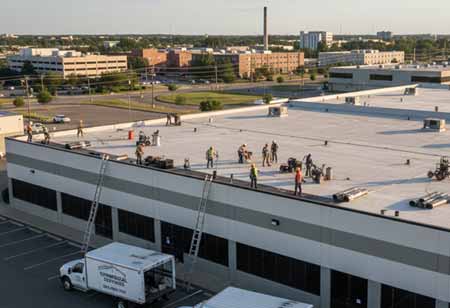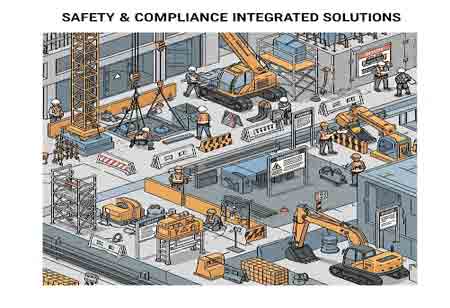Thank you for Subscribing to Construction Business Review Weekly Brief
Specials
- Apartment and Condominium Contractors Canada
- Decking Canada
- Architectural Glass Europe
- MEP APAC
- Construction Saudi Arabia
- German Apartment and Condominium Contractors
- Construction Law APAC
- Outdoor Construction
- Foundation Construction Canada
- MEP Canada
- Kitchen and Bath
- Cold Storage Construction APAC
- Precast Concrete Europe
- Construction Staffing Europe
- Pre-Construction Services
- Flooring System APAC
- Scaffolding Canada
- Swimming Pool Construction Canada
- Construction Management Canada
- Cold Storage Construction Canada
- Flooring Systems Europe
- Residential Construction
- Concrete Canada
- Construction Cladding Europe
- Construction Cladding APAC
- Concretes, Aggregates and Construction Materials APAC
- Concretes, Aggregates and Construction Materials Europe
- Commercial Contractors Europe
- Commercial Contractors APAC
- Dummy
- Construction Insulation, Coating and Waterproofing
- Construction Management APAC
- Landscaping Canada
- Construction Coating Europe
- Construction Tech Startups Europe
- Insulation Services Europe
- Mechanical Contractor Canada
- Mould Remediation and Testing Europe
- Swimming Pool Construction APAC
- Building Sealing Solutions Europe
- Construction Engineering Services
- Mechanical Electrical and Plumbing
- Roofing Systems Europe
- Architectural Glass APAC
- Startups APAC
- Construction Forensic and Owners Representative
- Flooring System
- Waterproofing APAC
- Wall Systems
- Safety and Compliance Europe
- Construction Bidding and Auctions
- Modular and Prefab Construction
- Architectural Glass
- Construction MENA
- Construction Demolition and Recycling Europe
- Modular Construction Europe
- Construction Interiors
- Steel Building APAC
- HVAC
- Doors and windows
- Construction Latam
- Building Information Modeling APAC
- Sustainable Construction APAC
- Building Restoration and Maintenance
- Commercial Contractors
- Specialty Construction
- Construction Engineering Canada
- Construction Engineering MENA
- Modular Construction Canada
- Modular Construction APAC
- Roofing and Siding Systems
- Workforce Management and Staffing
- Roofing Systems APAC
- Construction Consulting
- Steel Building Europe
- Construction Demolition and Recycling APAC
- Safety and Compliance APAC
- Concretes, Aggregates and Construction Materials
- Construction Cladding
Impact of Emerging Technologies on Construction Site Safety
Construction sites inherently harbor risks for workers and stakeholders. The integration of cutting-edge technologies has the potential to elevate site safety, efficiency, quality, and overall profitability for businesses

By
Construction Business Review | Tuesday, January 09, 2024
Stay ahead of the industry with exclusive feature stories on the top companies, expert insights and the latest news delivered straight to your inbox. Subscribe today.
Ongoing innovation in construction introduces new tools and equipment to enhance safety, efficiency, and convenience. Drones are employed for site surveys and inspections, while advanced lockout systems ensure secure machine shutdowns.
Fremont, CA: Construction sites inherently harbor risks for workers and stakeholders. The integration of cutting-edge technologies has the potential to elevate site safety, efficiency, quality, and overall profitability for businesses. However, the adoption of these technologies comes with its own set of challenges, requiring solutions to overcome existing obstacles. This article delves into the prospective influence of five innovative areas on worker safety at construction job sites.
Virtual Reality (VR) and Augmented Reality (AR):
AR and VR technologies are reshaping the construction landscape by melding natural and virtual world experiences to augment worker safety. AR utilizes wearable technology like headsets and smart glasses, offering hands-free access to real-time data, technical manuals, hazard warnings, and safety protocols. VR, on the other hand, immerses users in a completely digital environment. AR wearables provide hands-free access to real-time data, technical manuals, and guidance from remote locations, saving time and costs for both contractors and technical experts. VR facilitates interactive construction training, enabling workers to practice skills in a safe, controlled digital environment.
Intelligent Wearables:
Tech companies are integrating intelligent features into workers' equipment to bolster job site safety. Bright hard hats, wristbands, and smartphones can monitor health, detect falls, warn about high-voltage electricity, assist lone workers, and alert emergency personnel. Smart boots can detect falls and shocks, track a worker's location, and alert emergency personnel with a single button.
More in News





